The Golden Shores Marine Biological Preserve was created as mitigation for wetlands destroyed elsewhere in the port area.
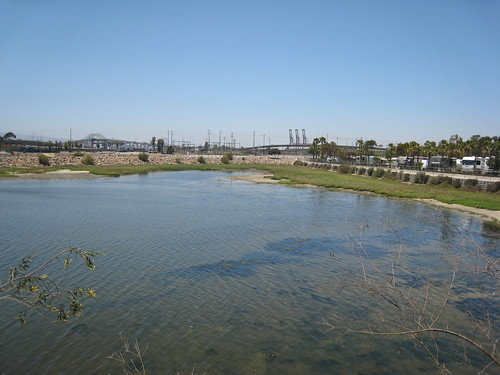
The Golden Shores Marine Biological Preserve, nestled between downtown and the port area on the Los Angeles River
The mouth of the Los Angeles River used to contain a great deal of wetlands, but nearly all of them have been destroyed--mostly in the construction of the port. [oldmap]
The wetland is right next to Catalina Landing, and is easily visited by the LB Transit Passport bus, or by the LA River bikepath. However, once you are there, access is restricted by ugly chainlink fences.


You must content yourself with gazing at the marsh from the shore. Bring binoculars to get the most out of your time here.

The stands of Spartina form little islands that rapidly accumulate peat--just one of the many critical functions of wetlands.
The wetland largely consists of salt grass (Distychlis spicata), with a few areas of pickelweed (Salicornia). In wetter areas along the main channel, taller cordgrasses grow (Spartina, presumably the native California cordgrass, S. foliosa). Even though Spartina plants grow closer to the ocean, they are in fact less salt tolerant than the salt grass and pickelweed that grow at higher elevations. This may seem backwards, but the further from the water, the saltier the environment. Tidal channels get flooded daily, so the water is never saltier than the ocean. In contrast, the higher elevation areas get inundated only during higher tides, so the salt gets concentrated until the next flooding flushes it out.
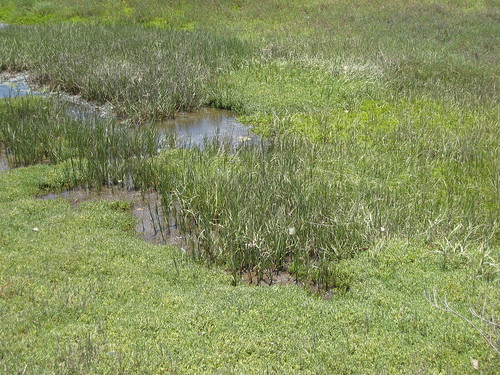
The taller cordgrasses grow in the wetter areas, where regular flushing keeps salinities low. Saltgrass and pickleweed can tolerate the higher salinities where flushing occurs less often.
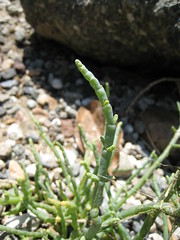
Pickleweed (Salicornia)
In addition to the marsh habitat, the restoration includes some mudflat and open-water areas.
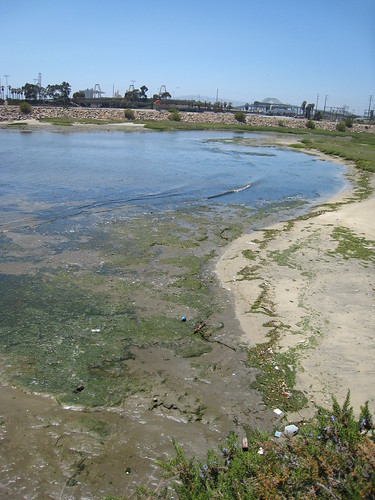
Mudflats at Golden Shore Preserve
These habitats might seem barren, but they are critical spawning grounds for fish, and provide excellent forage for waterfowl.
Despite the intense industry around the park, wildlife watching is pretty good here. Many birds, including herons, grebes, cormorants, and pelicans find plenty of fish to catch in the protected waters.
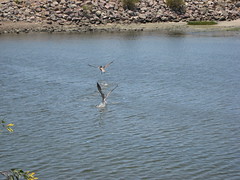
Pelicans taking off at Golden Shore Preserve
The rocky shoreline that surround the marsh were probably not considered part of the restoration, but you can find wildlife on these rocks as well:
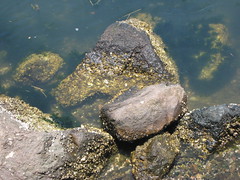
Barnacles, mussels, and other organisms need hard surfaces (such as these rocks) for attachment.
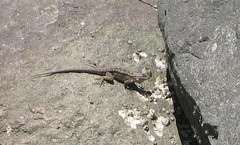
This great basin fence lizard (Sceloporus occidentalis longipes) is only too happy to make a home among the shoreline rocks.
Across the mouth of the preserve is an unusual yellow floating tube, called a boom:
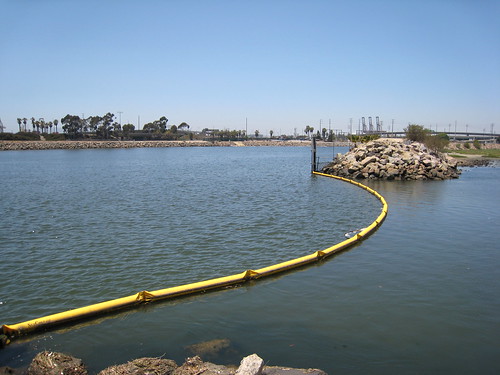
This boom manages to keep most of the floating trash and debris from entering and smothering the wetland. Unfortunately, it does not work during floods, and can do nothing to prevent incosiderate people from tossing trash over the fence (a major problem at this secluded park).
The upland areas of the park are landscaped and manicured. Unfortunately, the restoration seems to have stopped at the high-water line, and all the upland plants are nonnative horicultural shrubs--a wasted opportunity for native habitat restoration.

California encelia (Encelia californica), one of the few native plants I saw in the upland parts of the park.
Signs near the preserve provide some information about wetland ecology and wildlife:



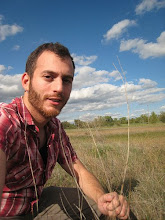

2 comments:
Nice work.
As a high school biology teacher who takes classes on field trips along the Los Angeles river, I appreciate the information provided here.
As a high school biology teacher who brings classes of students on field trips along the Los Angeles River, I appreciate the information you provide here.
Nice work, Raphael.
Post a Comment